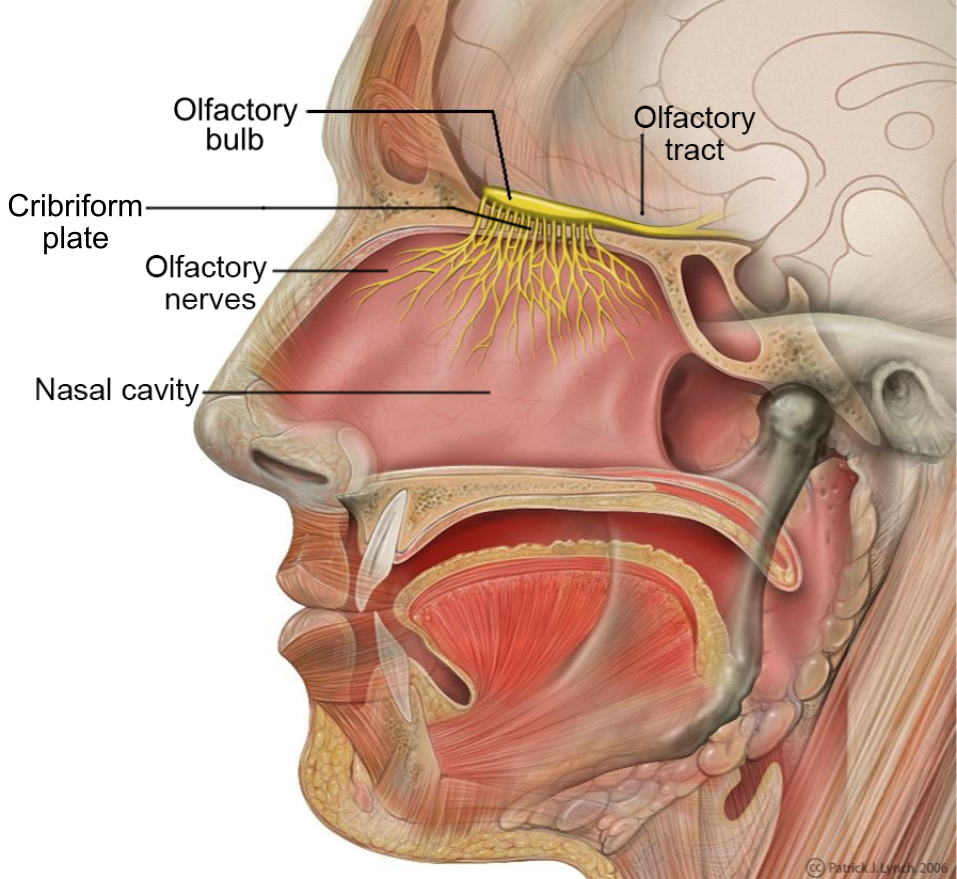Your cart is currently empty!
Smell
The nose knows! Follow your nose! These aren’t just phrases because your nose is in the front of your face, your sense of smell is one of your most well developed senses. Similar to taste, the sense of smell is stimulated by a direct absorption of chemicals.
Unlike taste, however, smell is the absorption of chemicals in the gaseous phase. You have the ability to smell the material currently in your mouth as well as the gaseous particles in the environment, a big advantage since putting everything in your mouth isn’t the best idea.
Your smell sensors reside in the upper cavity of your nose, very close to the base of the brain. These are the only neurons in your body that are directly exposed to the outside environment.

Because they are at the entrance to your respiratory system, a lot of different molecules have the opportunity to pass by your smell sensors and be absorbed. Think about all of the breaths you take every day and all of the stuff in the air that you smell in the course of breathing. Your world can be discovered through your sense of smell, or at least the gaseous parts of your world.
If your smell receptors absorb molecules that are powerful enough to overload them, your response is to wash the whole thing down by secreting mucus. This is why your nose often runs when you eat spicy (acidic) foods. The mucus is also secreted in order to catch larger particles that fly into the nose. The mucus latches onto the nasal hairs and forms a sort of web.
The more large particles in the air, the more mucus you make to catch them. This is one of the reasons seasonal allergies exist, pollen in the air causes mucus to build up in the nose.
Smoking cigarettes actually decreases mucus production, which is another reason why it is so dangerous. Just think about it, you are constantly breathing in large smoke particles but you are unable to wash out your nasal cavities. How do you think that affects your sense of smell?
Organisms have also adapted a repulsive response to molecules that might cause them harm, namely rotting food or waste products. Those individuals who were repulsed by the smell would avoid them altogether and have a better chance to survive.
Within your eyes, you have three types of photoreceptors that can absorb a specific frequency of light. Those three colors mix to create every color you have ever seen. In your nose, you have over ten thousand types of receptors. Each of those receptors can also be combined based on the chemicals absorbed.
I want you to imagine all of the colors you possibly can. Come up with a rough estimate for how many colors you can imagine. Now multiply that number by three thousand! That’s how many scents you have the ability to smell.
While some of your smell sensors are a bit more difficult to distinguish, your brain is very good at pairing the specific receptor with other stimulus. This is the reason that a particular scent can trigger a very vivid memories. Some smells are so distinct that your vivid memory might be one of the few neural paths connected to it. For example, maybe the scent of a particular flower reminds you of a picnic you had two years ago.

Due to the huge number of smell receptors, it is difficult for us to truly utilize scent to the fullest; many scents blur together. However, deep within our ancestry we retain certain smelling abilities. Mothers and children, for example, have the ability to identify each other by sense of smell! This was tested by blindfolding children and asking them to find their mothers out of a group of women; it worked every time.
Your sense of smell can be honed, like all parts of your body, if you take the time to practice it.
